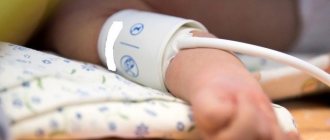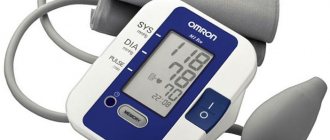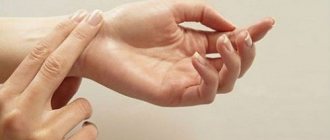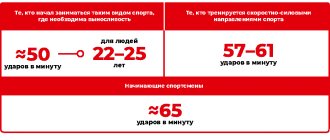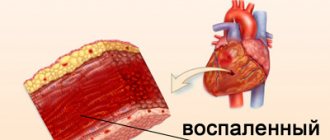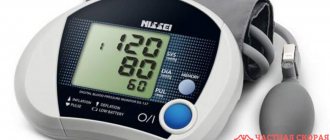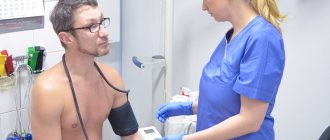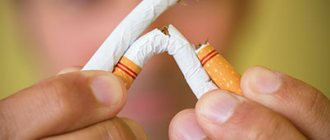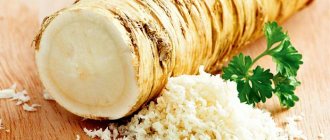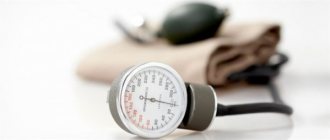The problem of arterial hypotension (low blood pressure) in children has become more common than before. Evidence suggests that hypotension is even more common in children than in adults. Unfortunately, this problem also affects newborns. For a child, blood pressure is considered low, the upper limit of which is no more than 100, and the lower limit is no more than 60. The risk group is schoolchildren, among whom girls are more susceptible to this condition. But blood pressure in children can be not only low, but also high. In this case, it is customary to talk about hypertension. Arterial hypertension, hypertension in children - a persistent increase in blood pressure above the 95th centile of the distribution scale of blood pressure values for a specific age, gender, weight and body length of the child. Normal blood pressure is considered to be values of systolic and diastolic blood pressure that do not go beyond the 10th and 90th centiles.
Normal blood pressure in children
Normal blood pressure in children is very different from that in adults.
The values are influenced by the child’s age, which also determines the following parameters:
- the degree of elasticity of the walls of blood vessels;
- capillary mesh size;
- lumen in arteries and veins.
The younger the body, the better the condition of the circulatory system and the lower the blood pressure - blood moves freely through the vessels with minimal pressure on their walls.
The formation of blood pressure develops dynamically in the first 12 months after birth. During this period, it steadily increases by 1 mm Hg. Art. every 4 weeks. After a year the process of increase slows down.
Table “Normal blood pressure indicators in children under one year of age”
| Child's age | Reference blood pressure values (mmHg) | |
| Systolic | Diastolic | |
| First 2 weeks | 60–95 | 40–50 |
| 2 to 4 weeks | 80–110 | 40–73 |
| 4 to 8 weeks | 82–112 | 40–75 |
| From 8 weeks to 6 months | 85–115 | 50–70 |
| From 6 months to 1 year | 90–115 | 50–75 |
From birth to 5 years, the level of child pressure does not differ between girls and boys. From 6 to 9 years of age, blood pressure levels in males are slightly higher, and in adolescence they become slightly lower.
Table "Normal children's blood pressure by age"
| Number of years | Limit values of the norm (mm Hg. Art.) |
| From 1 to 2 years | 90–112/60–73 |
| From 2 to 4 years | 100–113/60–75 |
| From 4 to 6 years | 100–115/60–77 |
| From 6 to 8 years | 100–120/60–78 |
| From 8 to 10 years | 100–123/60–80 |
| From 10 to 12 years | 110–125/70–84 |
| From 12 to 16 years | 110–135/70–85 |
From 7 to 16 years the indicators gradually increase:
- in girls - by 1 mm Hg. Art.;
- in boys – by 1.5–2 mm Hg. Art.
Important! Due to the growth of the body, childhood activity and adolescence, large fluctuations in blood pressure are possible (20–25 mm Hg). If deviations greatly exceed acceptable limits, it is worth showing the child to a doctor.
WHAT TO DO IF A CHILD HAS HIGH BP?
If this was discovered during an examination by a doctor, then keep in mind that children have so-called “white coat” hypertension due to the child’s emotional lability. If this turns out to be not an isolated case, then you should definitely keep a diary where you can record the child’s blood pressure readings. Moreover, it is necessary to measure at the same time. It is also additionally necessary to conduct examinations to assess damage to other organs (the so-called target organs): clinical blood test, clinical urine test, biochemical blood test with assessment of the lipid spectrum, electrolytes, glucose and renal markers, ECG, echocardiography, fundus examination , Ultrasound of the kidneys with assessment of blood vessels, 24-hour blood pressure monitoring.
Based on the results of the examination, treatment is prescribed with recommendations for control and lifestyle. In short, if a child has high blood pressure, it is recommended that he:
- first of all, normalization of lifestyle,
- healthy 8-10 hour sleep, regular physical activity in the form of walking, running, swimming, skating, skiing, cycling 30-60 minutes a day, limiting weight lifting (static loads),
- limiting work on gadgets to 30-40 minutes a day,
- proper nutrition (limiting table salt, reducing light carbohydrates),
- normalization of weight in case of excess.
If a hypertensive crisis occurs with a worsening condition, call an ambulance; it is not recommended to take medications on your own if they have not previously been selected by a doctor; incorrect dosage selection can worsen the condition!
Causes of pressure deviations from the norm
Blood pressure disorders can be a physiological feature of the body or occur against the background of external stimuli or internal diseases.
Why does my child have high blood pressure?
External causes can affect blood pressure and temporarily increase its levels:
- injuries;
- emotional overstrain or severe stress;
- physical fatigue.
If a child's blood pressure is consistently higher than normal, this may be a sign of moderate hypertension.
The development of pathological processes in a young body can provoke sharp and regular jumps.
- Cardiac pathologies - anomalies in the valve structure, congenital defects, poor conductivity of the heart muscle, rhythm disturbances.
- Kidney diseases (cause an increase in diastolic pressure) - dysplasia, structural defects, malignant compactions in tissues, injuries.
- Endocrine problems. Crohn's disease or tumor processes in the parathyroid glands disrupt tissue metabolism, which leads to excessive production of hormones and biologically active substances that narrow the lumen in the blood vessels and cause hypertension.
- Changes in the renal vessels of a congenital or acquired nature. Pathologies provoke secondary hypertension and act mainly on upper (systolic) blood pressure.
- Hereditary tendency to high blood pressure. This happens when one of the parents suffers from hypertension.
High blood pressure can be the result of long-term drug treatment with hormonal drugs and sympathomimetics. Blood pressure in adolescents is affected by alcohol consumption or smoking.
Why does my child have low blood pressure?
As the body ages, the pressure gradually increases. If a child experiences frequent downward swings, we may be talking about the development of serious diseases.
Provoking factors for hypotension are:
- disturbances in the endocrine system, which lead to a decrease in venous tone and loss of vascular elasticity;
- problems in hematopoiesis, in particular anemia;
- deviations in normal blood circulation that are caused by injuries or seals in the brain;
- decrease in thyroid hormones (thyroid dysfunction), which weakens vascular tone.
Low blood pressure can be a consequence of improper or inadequate nutrition, physical and emotional fatigue. In this case, low levels are temporary and return to normal after eliminating external stimuli.
Symptoms
If hypotension manifests itself in a newborn, then the parents do not have any special problems, because it is difficult to determine from his condition that there are health problems. This is explained by the fact that the child sleeps a lot, rarely cries, and is in constant peace. Children who have decreased muscle tone, legs and arms can extend more than 180 degrees at the joints. In addition, the following symptoms are observed: a delay in the rate of motor development and impaired swallowing and sucking. Dizziness, fainting, nosebleeds, emotional lability, decreased performance, joint and muscle pain, sudden deterioration in health, and headache may also occur. With a slight increase in blood pressure, the child’s health may be good. Although the child may quickly get tired and irritated. But if the pressure rises strongly, the child will always feel unwell. Among his complaints are the following: headache, dizziness, pain in the heart, palpitations, memory impairment. If a hypertensive crisis occurs. Symptoms such as severe headache, nausea, blurred vision, convulsions, impaired consciousness and others may be observed.
How to normalize blood pressure
Blood pressure should always be within age norms. If frequent jumps down or up are observed, specialists prescribe special treatment and adjust the child’s lifestyle.
Table “Methods of normalizing pressure”
| How to lower blood pressure | Follow the daily routine. Getting up in the morning and going to bed at night should be at the same time every day |
| Limit the consumption of pickled and canned foods. Reduce the daily dose of salt (food should be lightly salted) | |
| Improve your sleep. The need for a child’s body to sleep at night is at least 8–9 hours a day. Preschool children should be put to sleep during the day (1.5–3 hours) | |
| Treatment with antihypertensive drugs (diuretics, antispasmodics, calcium channel blockers, ACE inhibitors). Medicines are selected by the doctor individually, based on the underlying disease | |
| Avoid overwork. Physical activity should be moderate, and training should be dosed | |
| Maximum limitation of stress factors, emotional stress | |
| Spend more time outdoors | |
| In adolescence, avoid the abuse of weak alcoholic drinks and smoking | |
| How to increase blood pressure | Balance the diet so that the young body receives all the necessary substances. The child should eat more fruits, vegetables, meat, fish, dairy products, legumes and cereals. Meals must be divided into fractions (5–6 times a day) |
| To live an active lifestyle. Running, swimming, cycling, gymnastics, and dancing help increase low blood pressure. The main thing is to take into account the interests of the child | |
| Strengthen the body's defenses. Long walks in the fresh air (at least 40 minutes) and good nutrition will help with this. | |
| Use adaptogens (after consultation with your doctor). Tincture of lemongrass, ginseng or eleutherococcus increases the tone and elasticity of blood vessels | |
| Use physical therapy. A contrast shower and underwater massage help a lot. Normalization of pressure using similar methods occurs after 7–10 sessions | |
| Massotherapy. Conducted by a specialist. Restores normal functioning of the heart, blood vessels and nervous system, stabilizes blood pressure |
Preventive measures and specific therapy help restore normal functioning of the heart and blood vessels, strengthen the defenses of the young body and improve the general condition of the child. The main thing is to first examine and identify the causes of deviations, and then begin treatment.
Features of treatment
If deviations from the norm are identified, it is necessary to eliminate all provoking factors: balance the diet, lose excess weight, and add regular exercise.
To lower blood pressure, an atherogenic nutritional profile is required, in which foods are selected in such a way as to reduce the progression of the disease and restore normal metabolism, including lipid metabolism. These are seafood, lean fish, meat, nuts, citrus fruits.
In addition, salt intake is limited to 5 g. The teenager is advised to swim and walk. These simple measures can reduce blood pressure by 5-8 units. In this case, you need to regularly monitor your blood pressure, recording your readings daily.
Traditional recipes, agreed upon with a doctor, require stabilization of arterial parameters. They recommend tea made from rosehip, barberry, and calendula. Freshly squeezed juices of carrots, beets (be sure to dilute with water), lingonberries. Ready-made pharmacy tinctures of hawthorn, motherwort, valerian. For teenagers with discomfort in the heart area, compresses with mustard or apple cider vinegar are applied to the chest.
Only if high blood pressure is resistant to general health measures, herbs, and a balanced diet, the child is treated with medications. The general principles of therapy are as follows:
- use long-acting metabolic antihypertensive drugs;
- the choice of starting agents is dictated by the cause of hypertension;
- the complex necessarily involves ACE inhibitors (angiotensin-converting enzyme inhibitors), they act on the renin-angiotensin system, which secretes angiotensin II, known as one of the most effective hypertensive agents;
- impaired renal function dictates the use of drugs excreted by the liver;
- they begin treatment with minimal doses, and if there is no result, they begin to combine drugs;
- be sure to combine antihypertensive therapy with the prescription of correctors of lipid, carbohydrate, purine metabolism, and antiplatelet agents in order to normalize microcirculation;
- long-term therapy.
Treatment is carried out under the supervision of a doctor. Apply:
- ACE inhibitors (ACE inhibitors): Fosinopril, Spirapril, Omapatrilat;
- calcium channel blockers: Lercanidipine, Nifedipine, Nimodipine;
- beta blockers: Betaxolol, Carteolol, Labetalol;
- diuretics: Hypothiazide, Veroshpiron, Triampur, Spironolactone;
- sedatives: Novopassit, Afobazol, Elenium.
Sympatholytics, adrenergic blockers, and direct vasodilators are currently not relevant in the treatment of hypertension in adolescents.
Each class of medications has its own advantages and contraindications. The choice of drug is made taking into account the cause of hypertension, blood pressure, the patient’s age, and concomitant diseases.
Hypotension is a different story: there is no talk of any traditional treatment. If decoctions and dietary supplements are prescribed, then only from a pharmacy, with a doctor’s prescription. Alcohol tinctures of eleutherococcus, lemongrass, ginseng, echinacea or immortelle. The dosage is of great importance here, so making your own is excluded. In the first place is changing the teenager’s lifestyle.
Normalization of the microclimate in the family, school, and sports team relieves teenage hypotension very well. The correct daily routine, good, sound sleep, a contrast shower in the morning or tonic baths, sufficient rest, alternating with dosed physical or mental activity are the keys to success. You should limit computer games and watching movies.
At home, ginger tea with honey, cinnamon, strong black sweet tea, coffee, and hot chocolate are useful. Hypotension means salty food; sometimes a roach or a sandwich with herring, pickled cucumber, or tomatoes are enough to normalize blood pressure. At the same time, water accumulates in the body, which fills the bloodstream, increasing the volume of circulating blood, increasing blood pressure on the vessels, automatically raising pressure.
Hippotherapy, swimming with dolphins, and simple communication with pets give excellent results. All physical activity is selected under the supervision of a doctor, taking into account concomitant pathologies. Massage of the collar area and hands is possible.
Medicines are used as a last resort. Recommend:
- Adaptogens – strengthen, stimulate, have high biological activity: rosea radiola, ginseng, mumiyo, vitamin and mineral complexes;
- Nootropics - support higher mental brain functions, improve attention, encourage the study of new material: Nootropil, Cerebril, Lucetam, Oykamid;
- Antidepressants - reduce tension, improve mood: Afobazol, Prozac, Paxil;
- Tranquilizers – relieve anxiety and fear: Diazepam, Phenazepam, Mebicar.
All medications are taken in dosages that are appropriate for age.
How to measure a child's blood pressure
Measuring blood pressure in children has its own characteristics and is slightly different from a similar procedure in an adult.
- It is recommended to carry out the procedure in the morning, an hour after eating or walking. The child must visit the toilet and not be exposed to stress.
- The first time you take a measurement, you need to use both hands to determine where the pressure is higher.
- For a child under 2 years of age, the procedure is carried out in a lying position, for children older than this age - sitting, the legs should not hang down (if the baby does not reach the floor, install a stand).
- To measure, use a cuff according to size, since the component part of the tonometer for adults can distort the results of the study. For accurate measurement, the cuff should be ¾ of the distance from the armpit to the bend of the elbow.
Further, the procedure is no different from the usual sequence in adults. A phonendoscope is applied to the vein in the elbow, air is pumped in with a bulb and, after deflating the air, the beginning (systolic pressure) and end of the pulsation (diastolic blood pressure) are noted.
Blood pressure in children is always lower than in adults. The younger the body, the higher the elasticity of the vessels and the wider their lumen, which means that the pressure of blood on the lining of the arteries is minimal. As the child grows up, blood pressure gradually increases and by the end of adolescence reaches stable levels (110–120/70–80). Blood pressure in childhood can be affected by external factors - stress, overwork, trauma, physical activity, or internal diseases - cardiac, endocrine, renal pathologies.
Diagnostics
To make a diagnosis, first of all, blood pressure measurements are needed. This is usually done in a sitting position for the first half. The measurement occurs three times, the interval between these is three minutes. Also, it is not done immediately after mental or physical stress, but after an hour has passed. In addition, the following diagnostic methods are used: ECG, ECHO-kg, ABPM, study of autonomic homeostasis, EEG registration, psychological testing, clinical and biochemical blood tests, consultation of the necessary specialists in order to exclude secondary arterial hypotension. To confirm the diagnosis of arterial hypertension, daily monitoring and tests with different types of stress are used. During the study, it is important to identify the cause of the increase in pressure if hypertension is secondary. This is what helps the doctor prescribe effective treatment. If the cause of hypertension is not eliminated, treatment measures will not give the desired effect, the result will be temporary.
Change in indicators at 7-8 years
For children at this age, “jumps” in blood pressure are more often associated with increased psychological stress and high loads. Mostly they complain about feeling unwell after school, attending a club or section. According to medical statistics, in children seven years of age and older who study in specialized schools (mathematics, language, physics and mathematics), hypertension is diagnosed five times more often, and the blood pressure norm according to the table does not correspond. Such indicators are associated with high loads and insufficient rest.
Recording indicators
Diagnosis of arterial hypo- or hypertension is based on threefold measurement of indicators. To correctly measure blood pressure in children, it is necessary to select a tonometer according to the child’s age. The table values will help you choose the optimal cuff width, according to the All-Ukrainian Health Organization.
| Age category | Cuff width (cm) |
| Newborns and infants | 2,5 |
| 1–3 years | 5–6 |
| 4–7 years | 8–8,5 |
| 8–9 years | 9 |
| 10–13 years | 10 |
| 14–16 years old | 13 |
How to measure blood pressure in children and adolescents:
- It is necessary to give the child time to adapt to the conditions in which the measurement will take place (5–10 minutes).
- The arm on which the measurement will be taken should be at heart level, the back should rest against the back of the chair, and the legs should not be crossed. The sleeve should not squeeze the arm above the place where the cuff is fixed.
- The stethoscope is applied to the area of the ulnar fossa at the site of the projection of the brachial artery.
- The cuff is fixed 2.5 cm above the cubital fossa. Close the bulb valve, making sure that the readings are at 0 mmHg. Art.
- Inflate air into the cuff until the pulsation disappears, adding 20–30 mmHg. Art. Next, the valve of the bulb is slowly opened, carefully monitoring the number at which the pulsation becomes audible again. This is the first indicator - systolic pressure.
- The moment the pulsation disappears is the second indicator (diastolic pressure).
- Record the indicators on paper or in medical documentation.
Ways to control pressure
Direct and indirect methods of blood pressure control are used. An invasive method is necessary during surgery, when a probe and sensor are inserted into the artery. Non-invasive methods are compression options:
- Palpation is the most complex method, requiring certain skills. When pressing the artery with your fingers, it is important to catch the moment of maximum and minimum pulse in the area that is located below the compressed area.
- The auscultatory method of surgeon Korotkov has been a standard technique since 1905 to this day. It involves the use of a tonometer, pressure gauge and stethoscope.
- The oscillometric method underlies the operating principle of most automatic tonometers. It makes it possible to check blood pressure on the shoulder, knee, and wrist.
- Doppler ultrasound determines only systolic blood pressure using ultrasound. It is used more often for newborns and infants.
Modern tonometers allow children to measure blood pressure at home without special medical training. And yet, children need to know the basic rules for measuring blood pressure.
What foods can help with low blood pressure, and which ones should not be consumed?
– For low blood pressure, as I said earlier, it is recommended to consume large amounts of table salt (up to 10 g/day) and liquids (up to 3 l/day), and caffeine-containing drinks.
With postprandial hypotension, you need to adhere to a certain type of diet: eat often, in small portions, more proteins and fats, avoid carbohydrates (especially refined ones), eat warm or cold (not hot) foods. And you should give up alcohol.
In what situations should you definitely consult a doctor – and which one? – Patients with fainting, especially those that occur for the first time, need to consult a cardiologist, and, if necessary, a neurologist.
If blood pressure was previously normal or elevated, and then became chronically low, you should also contact a cardiologist to find out the cause. How to monitor your blood pressure and control its reduction?
– In order to prevent another decrease in blood pressure, it is necessary, firstly, to determine the cause (hypothyroidism, anemia, adrenal insufficiency, taking high doses of antihypertensive drugs, etc.) and, if possible, eliminate it.
Secondly, try to avoid provoking situations and factors, observe safety conditions during verticalization, and lifestyle recommendations.
And in situations where a person anticipates developing hypotension or fainting (increased sweating, nausea), you can help yourself by using the physical counterpressure maneuvers that I described earlier.
